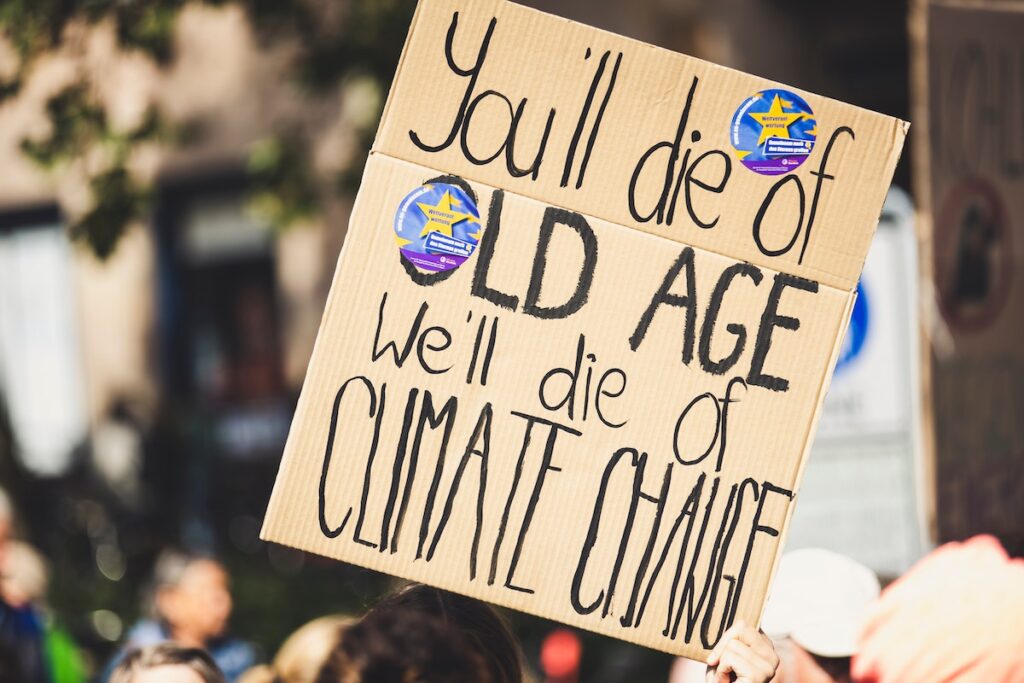
It is well known that air pollution is a key threat to human health. The World Health Organization (WHO) recently estimated that air pollution causes 482,000 premature deaths (WHO, 2016) within the WHO European Region and concluded that by reducing air pollution levels, countries can alleviate the burden of disease by a net benefit of 135,371 million US$ annually (OECD, 2015).
These estimates are based on studies that linked air pollution with cardiorespiratory problems, but recent research has demonstrated that air pollution, particularly emissions from traffic, may also affect mental health and wellbeing (Attademo et al., 2017) and potential biological mechanisms has been suggested (Block et al., 2009). However, the impacts of air pollution on mental health are not represented in WHO or OECD reports due to the fact that they were only recently discovered. These impacts imply significant additional economic and societal costs not currently represented in the WHO and OECD. Furthermore, despite considerable efforts, the majority of the world’s urban populations breathe air that fails to meet the health-based WHO Air Quality Guidelines.
Thus, the systematic review and meta-analysis of Braithwaite and colleagues (2019) is very timely and augments a similar review on the topic which was published at the same time (X Gu et al., 2019).

The World Health Organization considers air pollution as a key threat to human health, while the additional economic and societal costs of its impact need to be better understood.
Methods
This is a well-conducted and comprehensive systematic review and meta-analysis over a 43-year period (from 1974 to 2017) looking at associations between air pollution and adverse mental health in adults. The authors included human observational studies, while excluding any experimental or laboratory-based studies.
The authors searched three databases covering environmental science and medicine, screened references of included papers and included only studies written in English. Their search strategy focused on air pollution derived mainly from traffic and defined as particulate air pollution <1.0 microns in diameter (ultrafine particles – UFP); and particulate matter with aerodynamic diameter <10 μm (PM10) and <2.5 μm (PM2.5).
They also focused on studies that investigated mental health outcomes such as depression, anxiety, bipolar disorder, psychosis and suicide. Studies that used measures of stress or medication as a proxy of mental illness were excluded.
Since there has been a wide variation in the literature of how studies define short- and long-term exposure to air pollution, the authors decided to group their studies as short-term when exposure was measured for days or weeks and long-term when the exposure was measured for several months or years.
Authors conducted a pooled analysis of the results reported from studies exploring associations between PM10 and PM2.5 and risk of depression and PM10 and risk of suicide. Authors also estimated how much reduction in population adverse mental health would occur if exposure to air pollution were reduced to alternative ideal scenarios.
Following best practice, two of the authors screened all the studies to ensure consistency, assess the quality of the studies with a validated framework and published their protocol in advance including their analysis plan.
Results
The authors identified 25 eligible studies. Of those, two assessed associations to short- and long-term exposure to air pollution, while 14 assessed short-term exposure only, and 9 long-term only. The most common study locations were North America and Asia. There was variation in the methodology between studies; for example how the study was designed, what models were used to measure air pollution, on different diagnostic criteria of mental health and selection of confounders. In terms of study quality, only five studies exploring associations with the risk of depression and four with completed suicide were rated as good quality to be included in the meta-analysis.
- Overall, the authors found that long-term exposure to air pollution was related to increased risk of depression: a 10 micrograms per cubic metre increase in the average level of PM2.5 was equivalent to an increase in depression risk of approximately 10%
- The authors also found very limited evidence of a connection between short-term changes in PM10 exposure and the number of suicides.

This meta-analysis suggests an association between an increase in air pollution over long periods and an increased risk of depression.
Conclusions
- The authors concluded that these results may suggest a first indication of a global association between long-term exposure to particulate air pollution (PM2.5) and increased risk of depression, with no evidence observed for PM10
- Similar findings were observed for short-and long-term exposure to air pollution and anxiety, but these were based on very few studies
- There was very limited evidence for association with short-term exposures of air pollution and suicide
- No studies were identified for bipolar disorder and only one study was conducted with psychosis during the period of the study.
Whilst causation cannot be proved, this systematic review and meta-analysis suggests possible substantial morbidity from depression could be avoided with improved air quality. The researchers found that, if the relationship with depression reported in some of these studies is causal, then reducing global average exposure to fine particulate matter (PM2.5) air pollution from 44 micrograms per metre cubed (µg/m3) to 25µg/m3 could result in a 15% reduction in depression risk worldwide.

Whilst causation cannot be proved reducing global average exposure to fine particulate matter (PM2.5) air pollution to WHO annual recommended levels, could result in a 15% reduction in depression risk worldwide.
Strengths and limitations
The review highlights the sparsity of high quality research around the topic of air pollution and mental health. As the authors acknowledge, they were only able to undertake three meta-analyses, together covering two (depression, suicide) of the five eligible outcomes owing to the small number of studies.
An interesting finding for the reported association between PM2.5 and depression is that although the studies included were from different parts of the world (e.g. China, US, Germany) the reported associations were very similar. However, even these associations might disappear with the inclusion of additional studies from other countries – especially as the majority of the studies included were from high-income countries and were mainly written in English.
As the authors point out, findings from their systematic review and meta-analysis cannot confirm what causes what. It is easy to find coincidental changes in the environment that correlate with the number of people receiving psychiatric diagnoses. Due to environmental inequalities (Fairburn et al. 2019) people who live in more polluted areas tend to be different (e.g. in terms of ethnicity, gender or socioeconomic status) from those who live in less polluted areas in many ways not caused by the pollution, and it could be that one or more of these other differences are the real cause of differences in rates of psychiatric disorders. When analysing the data on this matter, statistical adjustments made by the studies to try to allow for these other factors are not always adequate and some of the potential confounders have been estimated inadequately (e.g. green space, noise or other pollutants).
Another limitation that was not discussed in the paper is that none of the studies mentioned above investigated these associations over the lifetime of the participants. Ideally studies would wish to capture early life exposure in air pollution to provide a comprehensive understanding of how changes in individual cognitive development during childhood influence psychiatric symptoms in adulthood.

Observational studies that link air pollution with mental health problems cannot sort out what causes what.
Implications for practice
Few studies to date have tried to understand the dynamics of air pollution and their links with mental health, so that public health researchers and policy makers can understand the societal and economic implications in order to intervene.
Big questions that remain unanswered in the topic of air pollution and mental health are still:
- Which specific component of air pollution is the most relevant?
- How do/could inhaled pollution particles gain access to the brain?
- Which pollutants can affect the brain?
Therefore, new research and innovative designs are needed on the impact of pollution reduction policies on population mental health, in order to strengthen the findings of the current studies so that public health researchers and policy makers can understand the societal and economic implications in order to intervene.
WHO recommends that an annual target of 10 micrograms per cubic metre for PM2.5 would be best to protect people’s health, while at the same time 91% of the world’s population lives in places where air quality exceeds WHO guideline limits. Thus, we should pay special attention to innovative measures that can improve air quality (such as the introduction of the ultra-low emission zone (ULEZ) in London) and boldly rethink the way that we plan our cities. Some cities have announced car-less visions, including Milan, Copenhagen, Madrid, Paris and Oslo; an urgency which will be more apparent during the aftermath of the Covid-19 pandemic era.

Improving air quality is a tractable, though complex issue and therefore measures to reduce air pollution may represent a potentially impactful and rare primary health measure for the prevention of poor mental health.
Statement of interests
None.
Links
Primary paper
Braithwaite I, Zhang S, Kirkbride JB, Osborn DPJ, Hayes JF. Air pollution (particulate matter) exposure and associations with depression, anxiety, bipolar, psychosis and suicide risk: a systematic review and meta-analysis. Environ Health Perspect. 2019;127(12):126002. doi:10.1289/EHP4595
Other references
Attademo L, Bernardini F, Garinella R, Compton MT. Environmental pollution and risk of psychotic disorders: A review of the science to date. Schizophr Res. 2017;181:55-59.
Block ML, Calderon-Garciduenas L. Air pollution: mechanisms of neuroinflammation and CNS disease. Trends Neurosci. 2009;32(9):506-516. doi: 10.1016/j.tins.2009.05.009
Fairburn, J.; Schüle, S.A.; Dreger, S.; Karla Hilz, L.; Bolte, G. Social Inequalities in Exposure to Ambient Air Pollution: A Systematic Review in the WHO European Region. Int. J. Environ. Res. Public Health 2019, 16, 3127.
WHO. WHO global urban ambient air pollution database (update 2016). http://www.who.int/phe/health_topics/outdoorair/ databases/cities/en/ (accessed February 22, 2019).
WHO Regional Office for Europe, OECD (2015). Economic cost of the health impact of air pollution in Europe: Clean air, health and wealth. Copenhagen: WHO Regional Office for Europe.
Photo credits
- Photo by Daphne Fecheyr on Unsplash
- Photo by Marcin Jozwiak on Unsplash
- Photo by Markus Spiske on Unsplash
- Photo by Noémi Macavei-Katócz on Unsplash
